Top page > Earth and Planetary Physics Group
Earth and Planetary Physics Group
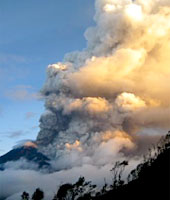
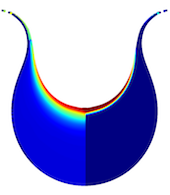
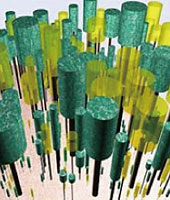
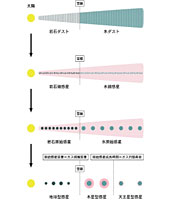
The Earth and Planetary Physics Group conducts research on the formation of the solar system (the growth process from dust to
planets), evolution of planets, co-evolution of earth and life, physical processes of climate change, and geophysical phenomena
occurring in the Earth and planets (earth quakes, volcanism, convection, etc.). We also study related fundamental physical problems
essential for understanding the formation and the evolution of the Earth and planets, such as collisional disruption, rheology,
physical properties of granular matter.
Research Subjects
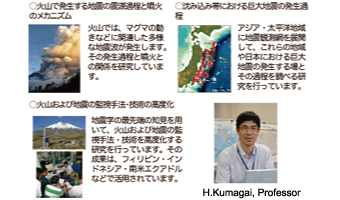
Volcanic eruptions and earthquakes
Studies on the basic physical processes of volcanic eruptions and earthquakes and the improvement of volcano and earthquake monitoring
○Source quantification of volcano-seismic signals and eruption mechanisms
We observe and analyze various seismic signals at active volcanoes and examine their relationships with volcanic eruptions.
○Source processes of large earthquakes in plate subduction zones
We deploy earthquake monitoring networks in the Asia-Pacific plate subduction zones and study the source processes of large earthquakes in these areas.
○Improvement of volcano and earthquake monitoring techniques
We study volcano and earthquake monitoring techniques using the latest seismological knowledge. Our original monitoring techniques are used in Philippines, Indonesia, Ecuador, and other countries.
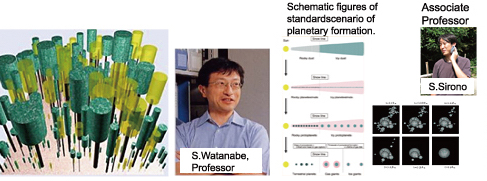
Formation of planetary system, Coevolution of earth and life, and Lunar and planetary exploration
○Prediction of long-term climate change from simple models
Is the Earth warming? Climate change is predicted by general circulation models (GCMs). These models are based on the phenomenologically-derived response of the present climate system, which may not be valid for a warmer future.
So, we are developing simple models based only on sound elemental processes to simulate the nature of atmosphere-land-ocean-life interactions. The results can be incorporated in GCMs for more accurate future predictions from
numerical studies.
○Planetary formation
What was the formation mechanism of Earth? Where was the birthplace of organic materials for life? About one thousand extrasolar planets have been found since 1995. Is our solar system special, or common in Universe? We try to solve these questions through analytic and numerical studies.
○Lunar and planetary exploration
We are studying the morphology and the interior of the planets and moons using geophysical and geological data obtained by lunar and planetary missions. Our group is also active in research and development of lunar and planetary exploration as science members of SELENE and Hayabusa-2 projects.

















